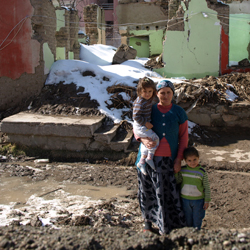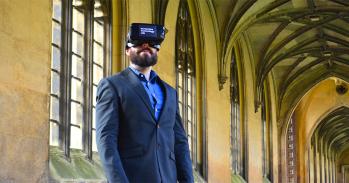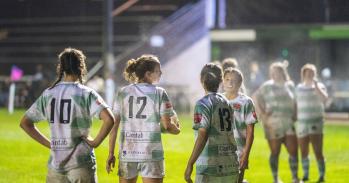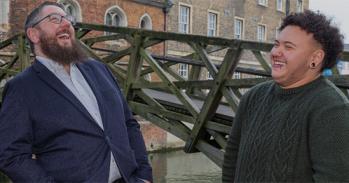
A student photography competition showcases some of the stunning visuals that result from modern Social Anthropology research
A student photography competition showcases some of the stunning visuals that result from modern Social Anthropology research
The photographs captured a few of my most memorable moments in the field that are deeply connected to my ethnographic work
Jonathan Taee
A woman holds her two children standing in front of their house, reduced to rubble after an earthquake. They wear no coats, one child has no shoes and there is snow on the ground. Residents in the block of flats behind - where the woman’s husband works as housekeeper - have just moved back into renovated apartments, while the family in the picture have yet to receive any state help.
Taken by Marlene Schäfers in the city of Van in eastern Turkey, this photograph is just one example of how social anthropologists often return from their fieldwork with compelling and deeply moving glimpses of life in very different parts of the world. Following a competition in the Division of Social anthropology, this image - along with dozens of others like it - is now being shared online for the first time.
The aim is to celebrate the diverse range of research carried out by students. Current PhD candidates are conducting research in Russia, Bengal, Bhutan, Vietnam, Turkey and the Democratic Republic of Congo as well as in the UK.
The very nature of research carried out by Social Anthropologists lends itself to visually stunning results. In order to study how people live – what they make, do, think and the organisation of their social relationships, societies and cultures – it is necessary to record this in a visual as well as written or audio form.
As a result we see an ethnographic picture of lives lived in places many of us will never experience for ourselves. While tales of people and cultures involved in the students’ research are both fascinating and poignant, photographs can complete the story and bring it alive for the reader.
For the competition, PhD students were asked to submit three photographs, along with a short narrative on their research. The judging panel, comprising of senior faculty members from the department, felt the overall standard of the competition was “impressive” with almost all of the images being of “exhibition quality”. However, because of the high standard the judges felt that “two entries of equal merit stood out above the others” and were therefore awarded joint first prize.
The first of these is Jonathan Taee. His research takes place in Bhutan where, since the 1960’s, the government has attempted to emerge as a modern nation state. As part of this process, it has encouraged development of the Ministry of Health to provide a range of institutionalised health services to the Bhutanese population.
In efforts to merge modern development whilst maintaining and preserving cultural identity, patients are offered two diagnostic and treatment paths. Firstly, biomedical hospitals, providing standard ‘western’ medicine, and secondly the National Traditional Medicine Hospital that offers Sowa-Rigpa, a practice based on the medical texts commonly attributed to the Buddha.
As well as both these forms of medicine being offered nationwide, patients may also seek out alternative options - such as ritual healers, shamans and bone-setters - and commonly use a combination of state and alternative healthcare providers, resulting in a complex healing process.
Jonathan’s photographs span the cultural and social aspects of his research. We see a woman receiving modern medical assistance following an incident of domestic violence, but also a man hunting for Cordyceps – a fungus of enormous value in traditional Chinese medicine – and a gloriously colourful display of Mongar Dzong Tshechu, a historical folk dance performed at a festival in Eastern Bhutan.
“I spent a year living in Thimphu, Mongar and other locations conducting ethnographic research with patients, practitioners and their families to explore health-seeking narratives, examining how, when, where and why patients are using the available assortment of practices, and what effects this medical pluralism may have on their experiences of sickness and amelioration,” said Jonathan.
"The photographs captured a few of my most memorable moments in the field that are deeply connected to my ethnographic work. I am very appreciative that I can share these moments with a wider audience.”
Also in joint first place was John Fahy, whose fieldwork has taken place in the Nadia district of West Bengal, close to the Bangladesh border.
The spiritual headquarters of The International Society for Krishna Consciousness (ISKCON) in Mayapur, 130km north of Kolkata, is home to the Vaishnavas, a diverse spectrum of members of a religious tradition from all over the world. The Vaishnavas are unified by the shared purpose of worshipping and serving the Hindu god Krishna. They also share a deep reverence for the 16th century saint, Sri Chaitanya Mahaphrabu who they consider to be a full incarnation of Lord Krishna, but disagree on some essential doctrinal and practical issues.
The focus of John’s research is to seek understanding of the channels through which conviction and belief are forged in a temple environment where people’s views differ considerably. “I aim to investigate the various ‘ways of knowing’ in the temple, as are negotiated between the social and the self through everyday interactions in Mayapur,” he said.
Taken from the town of Mayapur and from further afield Kolkata, John’s pictures record the social activities of people who live according to Gaudiya Vaishnava teachings. Local Mayapur women take oxen to bathe in the Ganges; a crowded ferry boat travels from Mayapur to Nabadwip; and in a Kolkata market, a man sells vegetables with his family in tow.
Photography is becoming increasingly central to how academia tells the world about research. For social anthropologists, these images are not just part of the story they want to tell, but a possible clue to the behaviour of that most complex and unpredictable of species - us.
This work is licensed under a Creative Commons Licence. If you use this content on your site please link back to this page.





